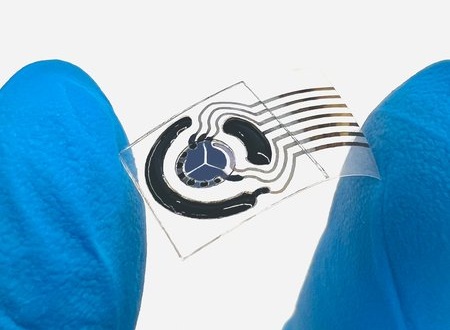Deaths Caused by the 2009 Flu Pandemic Greatly Exceeded WHO Estimates
|
By HospiMedica International staff writers Posted on 09 Dec 2013 |
![Image: Electron micrograph showing the 2009 H1N1 virus (Photo courtesy of the CDC - [US] Centers for Disease Control and Prevention). Image: Electron micrograph showing the 2009 H1N1 virus (Photo courtesy of the CDC - [US] Centers for Disease Control and Prevention).](https://globetechcdn.com/mobile_hospimedica/images/stories/articles/article_images/2013-12-09/GMS-378.gif)
Image: Electron micrograph showing the 2009 H1N1 virus (Photo courtesy of the CDC - [US] Centers for Disease Control and Prevention).
A new estimate suggests that the global death toll from the 2009 outbreak of the H1N1 virus to be 10 times higher than the World Health Organization’s reckoning, which was based only on laboratory-confirmed cases.
A team of researchers comprising more than 60 collaborators in 26 countries analyzed weekly virology data from the World Health Organization (WHO) FluNet database and national influenza centers to identify influenza active periods, and obtained weekly national underlying cause-of-death time series for 2005–2009 from collaborators in more than 20 countries (35% of the world's population).
The investigators employed a multivariate linear regression model to measure the numbers and rates of pandemic influenza respiratory deaths in each of these countries. Then, in the second stage of their analysis, they used a multiple imputation model that took into account country-specific geographical, economic, and health indicators to project the single-country estimates to all world countries.
The WHO reported 18,631 laboratory-confirmed pandemic deaths, but the total pandemic mortality burden was substantially higher. The results of the current study yielded an estimate that between 123,000 and 203,000 pandemic influenza respiratory deaths occurred globally from April 1, 2009, through December 31, 2009. Most of these deaths (62%–85%) occurred in people younger than 65 years old. There was a striking regional heterogeneity in deaths, with up to 20-fold higher mortality in Central and South American countries than in European countries. The model attributed 148,000–249,000 respiratory deaths to influenza in an average prepandemic season. Notably, only 19% of these deaths occurred in people younger than 65 years old.
“This study confirms that the H1N1 virus killed many more people globally than originally believed,” said first author Dr. Lone Simonsen, professor of global health epidemiology at George Washington University (Washington DC, USA). “We also found that the mortality burden of this pandemic fell most heavily on younger people and those living in certain parts of the Americas.”
“Whenever a new influenza virus emerges the ensuing outbreak can represent a crisis—with rapidly spreading illness and death that spreads from country to country,” said Dr. Simonsen. “The 1918 Spanish influenza pandemic, for example, killed approximately 2% of the world population at the time or a staggering 50 million. Although the H1N1 flu did not come close to causing that high casualty rate, understanding the global impact of such a pandemic remains vitally important in order to plan and prepare for the next time a pandemic virus emerges.”
The study was published in the November 26, 2013, online edition of the journal PLOS Medicine.
Related Links:
George Washington University
World Health Organization (WHO) FluNet database
A team of researchers comprising more than 60 collaborators in 26 countries analyzed weekly virology data from the World Health Organization (WHO) FluNet database and national influenza centers to identify influenza active periods, and obtained weekly national underlying cause-of-death time series for 2005–2009 from collaborators in more than 20 countries (35% of the world's population).
The investigators employed a multivariate linear regression model to measure the numbers and rates of pandemic influenza respiratory deaths in each of these countries. Then, in the second stage of their analysis, they used a multiple imputation model that took into account country-specific geographical, economic, and health indicators to project the single-country estimates to all world countries.
The WHO reported 18,631 laboratory-confirmed pandemic deaths, but the total pandemic mortality burden was substantially higher. The results of the current study yielded an estimate that between 123,000 and 203,000 pandemic influenza respiratory deaths occurred globally from April 1, 2009, through December 31, 2009. Most of these deaths (62%–85%) occurred in people younger than 65 years old. There was a striking regional heterogeneity in deaths, with up to 20-fold higher mortality in Central and South American countries than in European countries. The model attributed 148,000–249,000 respiratory deaths to influenza in an average prepandemic season. Notably, only 19% of these deaths occurred in people younger than 65 years old.
“This study confirms that the H1N1 virus killed many more people globally than originally believed,” said first author Dr. Lone Simonsen, professor of global health epidemiology at George Washington University (Washington DC, USA). “We also found that the mortality burden of this pandemic fell most heavily on younger people and those living in certain parts of the Americas.”
“Whenever a new influenza virus emerges the ensuing outbreak can represent a crisis—with rapidly spreading illness and death that spreads from country to country,” said Dr. Simonsen. “The 1918 Spanish influenza pandemic, for example, killed approximately 2% of the world population at the time or a staggering 50 million. Although the H1N1 flu did not come close to causing that high casualty rate, understanding the global impact of such a pandemic remains vitally important in order to plan and prepare for the next time a pandemic virus emerges.”
The study was published in the November 26, 2013, online edition of the journal PLOS Medicine.
Related Links:
George Washington University
World Health Organization (WHO) FluNet database
Latest Critical Care News
- 'Universal' Kidney to Match Any Blood Type
- Light-Based Technology to Measure Brain Blood Flow Could Diagnose Stroke and TBI
- AI Heart Attack Risk Assessment Tool Outperforms Existing Methods
- Smartphone Imaging System Enables Early Oral Cancer Detection
- Swallowable Pill-Sized Bioprinter Treats GI Tract Injuries

- Personalized Brain “Pacemakers” Could Help Patients with Hard-To-Treat Epilepsy
- Microscopic DNA Flower Robots to Enable Precision Medicine Delivery
- Origami Robots to Deliver Medicine Less Invasively and More Effectively
- Improved Cough-Detection Technology Aids Health Monitoring
- AI Identifies Children in ER Likely to Develop Sepsis Within 48 Hours
- New Radiofrequency Therapy Slows Glioblastoma Growth
- Battery-Free Wireless Multi-Sensing Platform Revolutionizes Pressure Injury Detection
- Multimodal AI to Revolutionize Cardiovascular Disease Diagnosis and Treatment
- AI System Reveals Hidden Diagnostic Patterns in Electronic Health Records
- Highly Sensitive On-Skin Sensing Monitor Detects Vitamin B6 and Glucose in Sweat
- Artificial Intelligence Revolutionizing Pediatric Anesthesia Management
Channels
Surgical Techniques
view channel
Minimally Invasive Endoscopic Surgery Improves Severe Stroke Outcomes
Intracerebral hemorrhage, a type of stroke caused by bleeding deep within the brain, remains one of the most challenging neurological emergencies to treat. Accounting for about 15% of all strokes, it carries... Read more
Novel Glue Prevents Complications After Breast Cancer Surgery
Seroma and prolonged lymphorrhea are among the most common complications following axillary lymphadenectomy in breast cancer patients. These postoperative issues can delay recovery and postpone the start... Read morePatient Care
view channel
Revolutionary Automatic IV-Line Flushing Device to Enhance Infusion Care
More than 80% of in-hospital patients receive intravenous (IV) therapy. Every dose of IV medicine delivered in a small volume (<250 mL) infusion bag should be followed by subsequent flushing to ensure... Read more
VR Training Tool Combats Contamination of Portable Medical Equipment
Healthcare-associated infections (HAIs) impact one in every 31 patients, cause nearly 100,000 deaths each year, and cost USD 28.4 billion in direct medical expenses. Notably, up to 75% of these infections... Read more
Portable Biosensor Platform to Reduce Hospital-Acquired Infections
Approximately 4 million patients in the European Union acquire healthcare-associated infections (HAIs) or nosocomial infections each year, with around 37,000 deaths directly resulting from these infections,... Read moreFirst-Of-Its-Kind Portable Germicidal Light Technology Disinfects High-Touch Clinical Surfaces in Seconds
Reducing healthcare-acquired infections (HAIs) remains a pressing issue within global healthcare systems. In the United States alone, 1.7 million patients contract HAIs annually, leading to approximately... Read moreHealth IT
view channel
Printable Molecule-Selective Nanoparticles Enable Mass Production of Wearable Biosensors
The future of medicine is likely to focus on the personalization of healthcare—understanding exactly what an individual requires and delivering the appropriate combination of nutrients, metabolites, and... Read moreBusiness
view channel
Philips and Masimo Partner to Advance Patient Monitoring Measurement Technologies
Royal Philips (Amsterdam, Netherlands) and Masimo (Irvine, California, USA) have renewed their multi-year strategic collaboration, combining Philips’ expertise in patient monitoring with Masimo’s noninvasive... Read more
B. Braun Acquires Digital Microsurgery Company True Digital Surgery
The high-end microsurgery market in neurosurgery, spine, and ENT is undergoing a significant transformation. Traditional analog microscopes are giving way to digital exoscopes, which provide improved visualization,... Read more
CMEF 2025 to Promote Holistic and High-Quality Development of Medical and Health Industry
The 92nd China International Medical Equipment Fair (CMEF 2025) Autumn Exhibition is scheduled to be held from September 26 to 29 at the China Import and Export Fair Complex (Canton Fair Complex) in Guangzhou.... Read more














